Best Shots Review: Mark Waid's Daredevil with Paolo Rivera, Marcos Martin, Chris Samnee, and others
An expansive review of writer Mark Waid's DAREDEVIL run with artists Paolo Rivera, Marcos Martin, Chris Samnee, and others
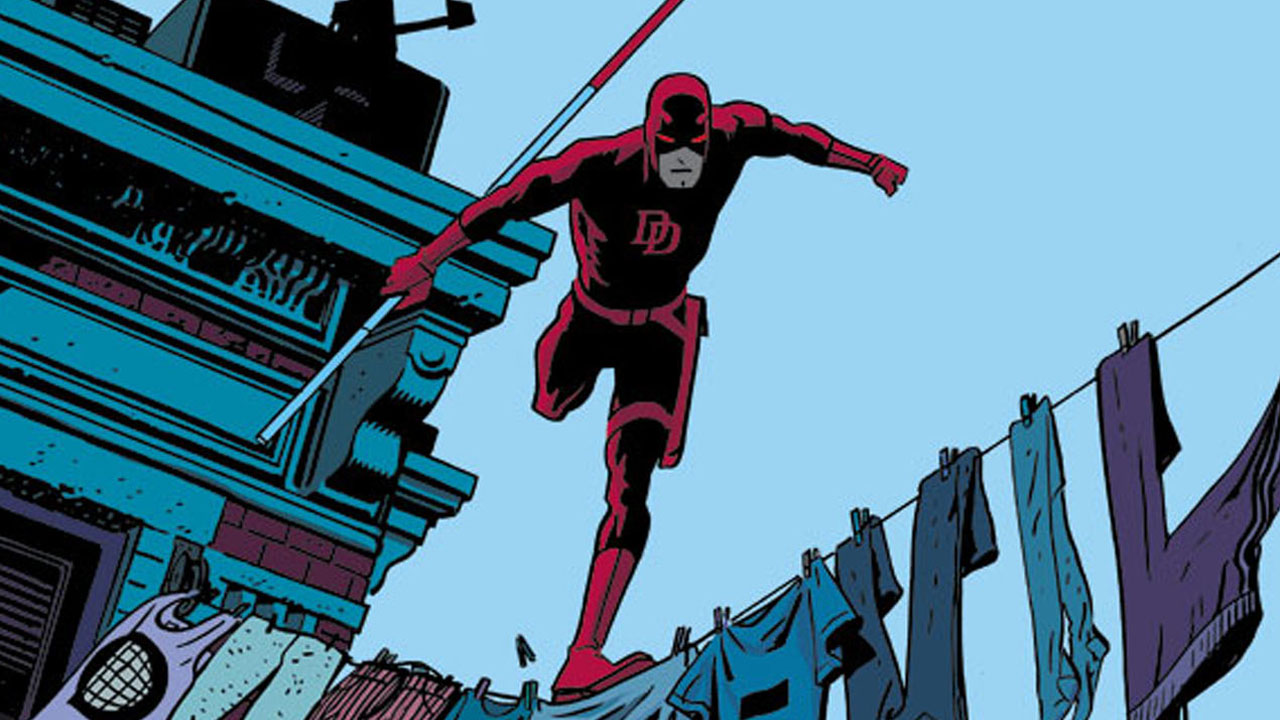
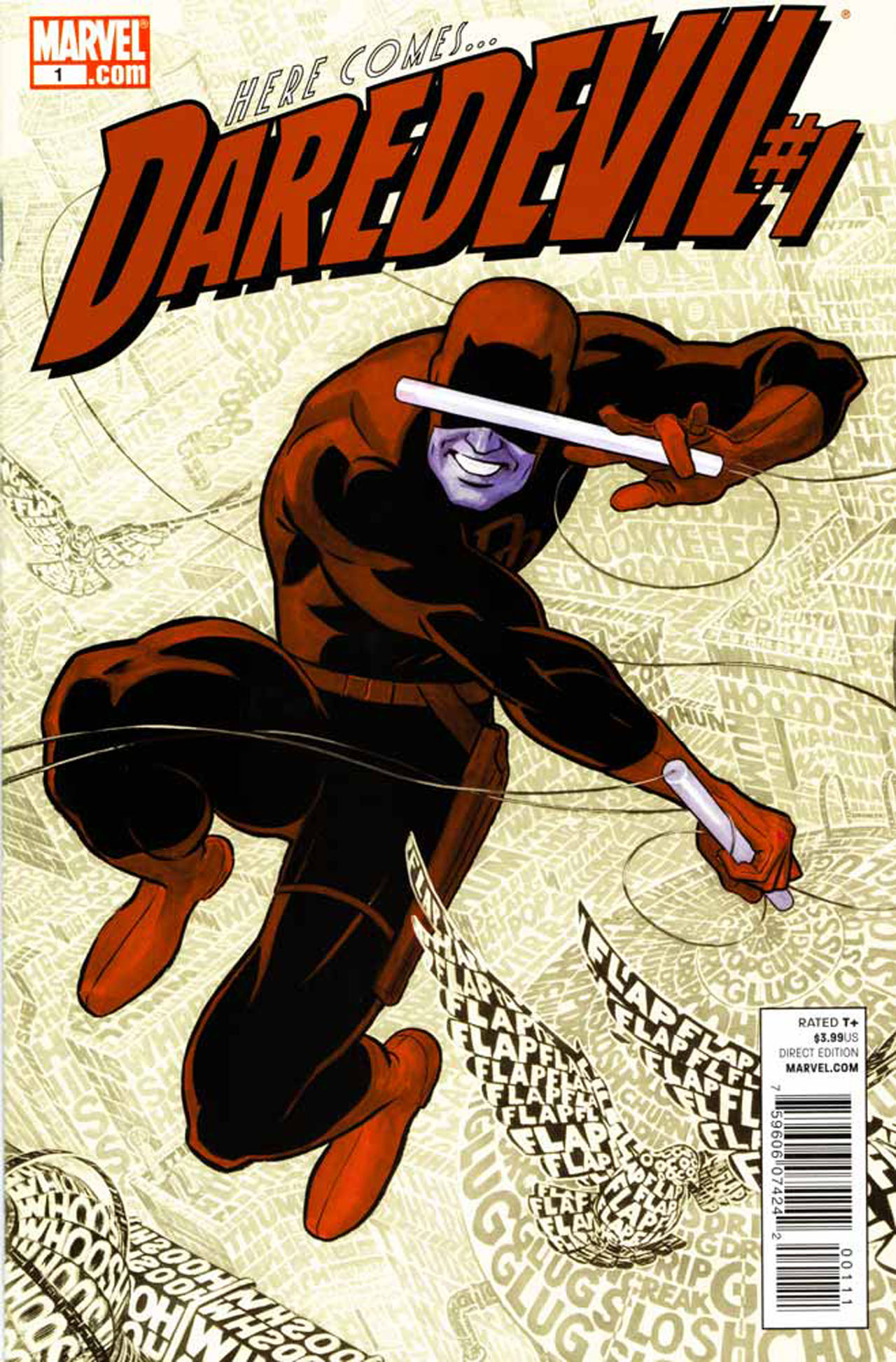
Daredevil, Vol. 3 and 4
Written by Mark Waid
Art by Paolo Rivera, Joe Rivera, Javier Rodriguez, Marcos Martin, Muntsa Vicente, Kano, Khoi Pham, Tom Palmer, Michael Allred, Laura Allred, Marco Checchetto, Matt Hollingsworth, Chris Samnee and Matt Wilson
Lettering by Joe Caramanga
Published by Marvel Comics
For years, Matt Murdock’s life was mired in despair. Through hundreds of comic books, writers and artists consistently put Daredevil and those closest to him through the wringer – it was less of a trend, and more of a constant status quo, that for Daredevil, bleakness was just another word for destiny. But in 2011, something strange happened – Matt Murdock started to smile again.
This change came with the arrival of writer Mark Waid, who, along with a cadre of talented artists, was tasked with bringing Daredevil back to shelves after his lowest point, both personally and creatively. What followed was four years of fun, emotional and genuinely thrilling comics that completely revitalized a character simply by turning him toward the light. Mark Waid, Paolo Rivera, Marcos Martin, Khoi Pham, Kano, Marco Checchetto, Michael and Laura Allred, and Chris Samnee – the artist that became synonymous with Matt Murdock throughout this run – took Daredevil back to streets, but not the same gritty and grim streets that he stalked before. Daredevil has always been a character who has transformed comic books through dark and depressing runs featuring Frank Miller, David Mazzucchelli, Brian Michael Bendis and Ed Brubaker – but it took Mark Waid and company to show that happiness might just be Matt Murdock’s most revolutionary act.
From the very first page of this new run, we know we’re in for something different. Prior to Waid and Rivera’s first issue, Matt Murdock had been a man on the run, following a case of literal demonic possession during the "Shadowland" event. After all that relentless darkness, it’s a welcome change of pace to see our first image of Daredevil – Matt holding himself on one of the beautiful spires of the Cloisters, waiting for his moment to crash a beautiful, mob-funded wedding inside. From the very beginning, with Rivera’s use of inviting, bright colors, that this is a brand-new day for Matt Murdock, as he drinks in every detail of the landmark with an uncharacteristic grin: “I’ll bet it’s a beautiful sight.”
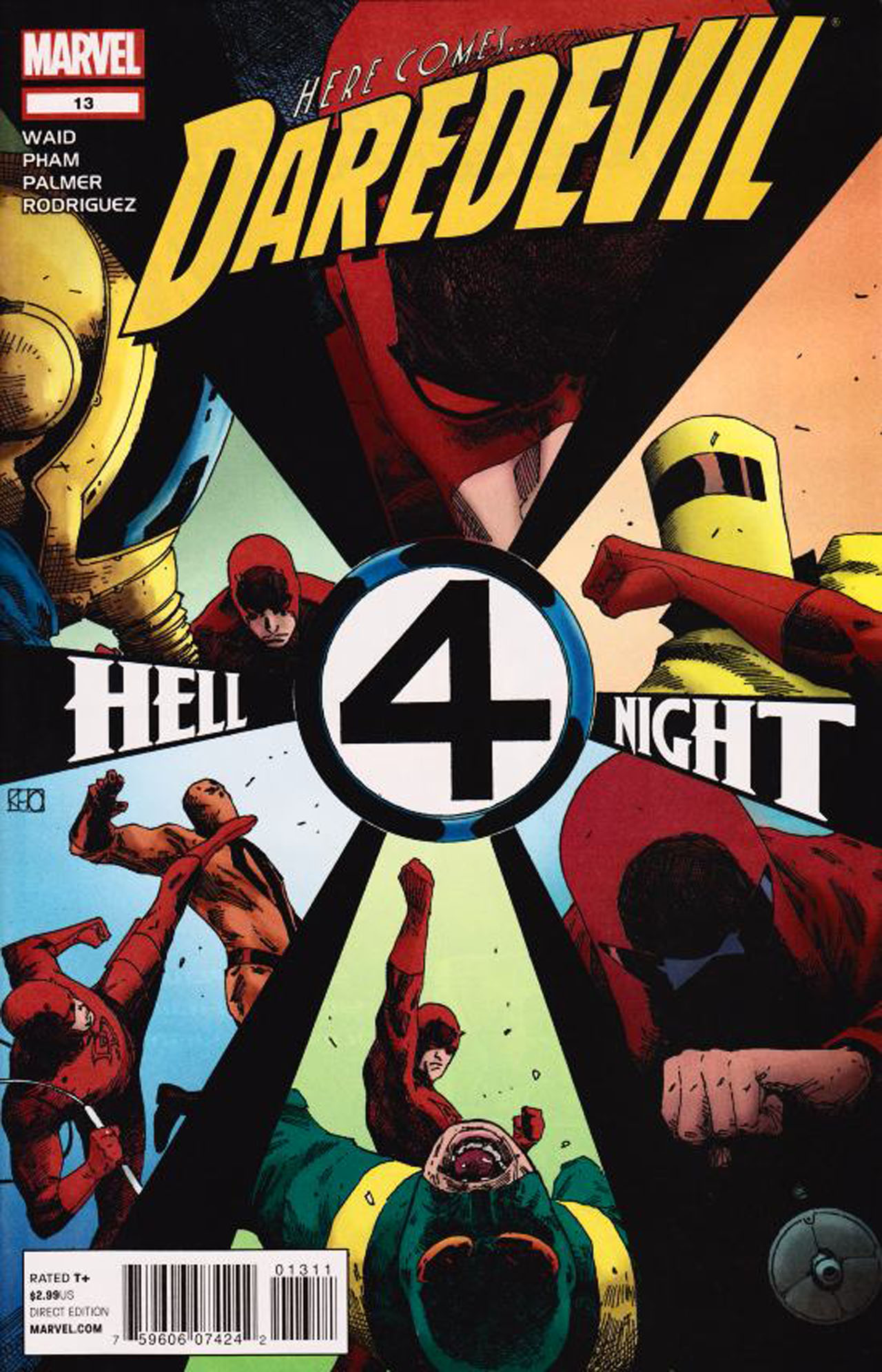
With this scene as his thesis statement, Mark Waid completely turns Matt’s characterization thus far on its ear and finds all-new energy with Daredevil. Until this volume, Matt was dour, stand-offish, and struggling (and mostly losing) against severe depression. Waid’s characterization, however, is an inspiration for anyone who might be fighting their inner demons, as he lifts Matt up from his Miller-inspired drudgery and brings him back to the dashing Wally Wood hero that he used to be. From the beginning, Waid writes Matt as a smiling, slightly cocky man about town, taking Matt’s adversity and using it to inform a brighter, more optimistic, and more new reader-friendly creative direction. Matt himself even states that he’s tired of letting the world beat him down time and time again, and that there’s no time like the present to make a drastic change. Daredevil, Vol. 3 was that precise change, and it doesn’t just stop with the sterling characterization.
As Volume Three starts, Waid and Paolo Rivera carefully test the waters of this new direction with accessible stories that highlight Waid’s keen scripting and Rivera’s sharp visuals. While Waid finds a way to rope most of these disparate stories into a compelling larger arc further into the third volume’s run, most of these early issues are slick entries into Matt’s new world view tailor-made for new readers and lapsed fans. Rivera and colorist Javier Rodriguez constantly outdo themselves with these done-in-one issues, establishing a firm visual language for the new volume such as an arresting magenta take on Matt’s radar sense as well as striking SFX cues that bleed into the panel construction, setting Daredevil apart from its superhero title contemporaries. Rivera’s issues are essential in establishing the look of Matt’s new swashbuckling adventures. While a lot of these early issues are pretty simple when it comes to their plot, the artwork is consistently fun and innovative.
After cutting their teeth with done-in-one stories, Daredevil, Vol. 3 delves into its first major story arc, “Megacrime and Punishment,” an arc which demonstrates the scope of Mark Waid’s ambition. After stumbling upon an artifact from a forgotten battle, Matt Murdock finds himself the target of not one, not two, but five different supercrime organizations. What could have been just a simple MacGuffin hunt becomes a tense and sprawling chess game between Daredevil and the likes of the Secret Empire and A.I.M. for control of the Omega Drive, a ripped-off piece of one of the Fantastic Four’s costumes that has been turned into a hard drive filled with secrets regarding Marvel’s most powerful crime organizations. Gone are the Hand and martial arts-based villains of the past and in their place are faceless, laser-wielding thugs; a welcome change of pace from throwing stars and katanas. Handling most of these issues is Khoi Pham, whose sketchy and noir-inspired pencils give Daredevil it's grittiest-looking issues, but still never allowing it to get too mired in the darkness that once defined the title.
Comic deals, prizes and latest news
Get the best comic news, insights, opinions, analysis and more!
The Megacrime arc is also the backdrop in which the equally fun and punch-filled crossover “The Omega Effect” smashes onto the pages of Daredevil, Avenging Spider-Man and The Punisher. As Matt holds each Megacrime organization in check with more than a few crafty moves, he enlists the help of Spider-Man, the Punisher, and scene stealer Rachel Cole-Alves in order to take the fight to Megacrime and end the stalemate once and for all. In any other hands, "The Omega Effect" would feel like another needless crossover aiming to only boost sales with team-ups, but the issues taking place in the Daredevil title feel propulsive and fun, even though it was preempting Greg Rucka’s violent take on the Punisher.

That said, “The Omega Effect,” while fun, still suffers from the same problems that plague most team-up based crossovers; readers are forced to buy two separate other issues of different titles if they want to get the full experience and those who only opt to buy one or two of the issues pertaining to the crossover only feel like they are getting part of the story. To make matters worse, each issue of the respective titles were still being written by the series writers at the time, with only plotting consideration given to the other writers (Rucka and Waid teamed up to kick off the event in Avenging Spider-Man while Rucka was right in the middle of his Punisher run). While both writers employ strong points of view, as a reader it’s difficult to parse both takes into one. Despite being the most skippable arc in his run, Waid managed as well as he could while still maintaining the character work established in the character’s respective titles, aided in large part by the super-pretty pencils of Punisher series artist Marco Checchetto. While it is Matt who ultimately ends the threat of Megacrime by his own hand, the arrival of characters that have been so deeply woven into Daredevil’s history is as fun as you might expect.
Taking some well-deserved time off after vanquishing the threat of Megacrime, Waid downshifts the series to detail the first official date between Matt Murdock and Assistant District Attorney Kristen McDuffie, a spunky supporting character that inspires more than a few comparisons to Lois Lane. Until #12, the romantic tension between Matt and Kristen has been building to a fever pitch through razor sharp dialogue, as Kristen coyly pushes Matt to reveal his secret identity. It all comes to a head with #12, as Matt and Kristen take a visit to a carnival and give it a sexy twist, with Matt blindfolding Kristen in order to give her a small taste of his life as a blind man. What follows is a personal story that intertwines Matt and Kristen’s budding romance with Matt’s longstanding friendship with Foggy, as well as the final stages of Matt’s great game with Megacrime. There are a lot of issues throughout this run that display the creative team’s willingness to make this a relatable superhero book, and this adorable issue twelve takes Matt’s personal life to the next level, pairing him up with not another potential victim, but with a woman who can more than hold her own against Matt and his extraordinary life.
While this story is important because it truly galvanizes Matt’s supporting cast through the rest of the run, it’s also a watershed moment because this serves as the first story drawn by Chris Samnee, whose career-making art made Daredevil as a critical darling amongst the comic book press. From this single issue on, Samnee delivers some beautiful character designs and storytelling choices, ranging from his steamy first page with Kristen to Latverian Chancellor Beltane’s grand military-inspired costume, or even the masterful use of a slash of red across a pitch-black panel, illustrating the faintest glimmer of a thermal image as Matt struggles to regain his senses in Latveria. A reader could open up any one issue of Samnee’s Daredevil and find a gorgeous page. Samnee also took the visual tone established by Rivera and ran with it, even perfecting and expanding Rivera's singular take on Matt's radar sense, which quickly became one of Daredevil’s most consistently entertaining visual tricks.
The fallout of Megacrime also directly bleeds into the issue’s next arc, in which Matt is kidnapped and left literally senseless in Latveria, home of Marvel arch-foe Dr. Doom. Though the “Senseless” arc is quick to finish, lasting only two issues, it is important in the grand scheme of Daredevil, Vol. 3, because this jaunt into Doom country marks the arrival of Chris Samnee as the series’ regular artist. Samnee, at this point no stranger to Matt and his adventures, starts off his tenure in grand fashion detailing the beautifully regressive land of Latveria with his trademark blocky, yet stylish pencils, aided by the rich colors of Javier Rodriguez, who rendered the grimy, yet regal land of Latveria with appropriate grey scale throughout as well as interjecting striking colors through certain scenes, like the neon yellow gas Matt is assaulted with and the drab blues of Latveria at night. After a bit of deus ex machina in the form of an Iron Man cameo, Matt is recused and whisked back to New York. Though a bit of an easy out to end this arc with, “Senseless” still stands as one of Daredevil’s clearest points of entry into the series and a fun little diversion from the streets and awaiting problems of New York.
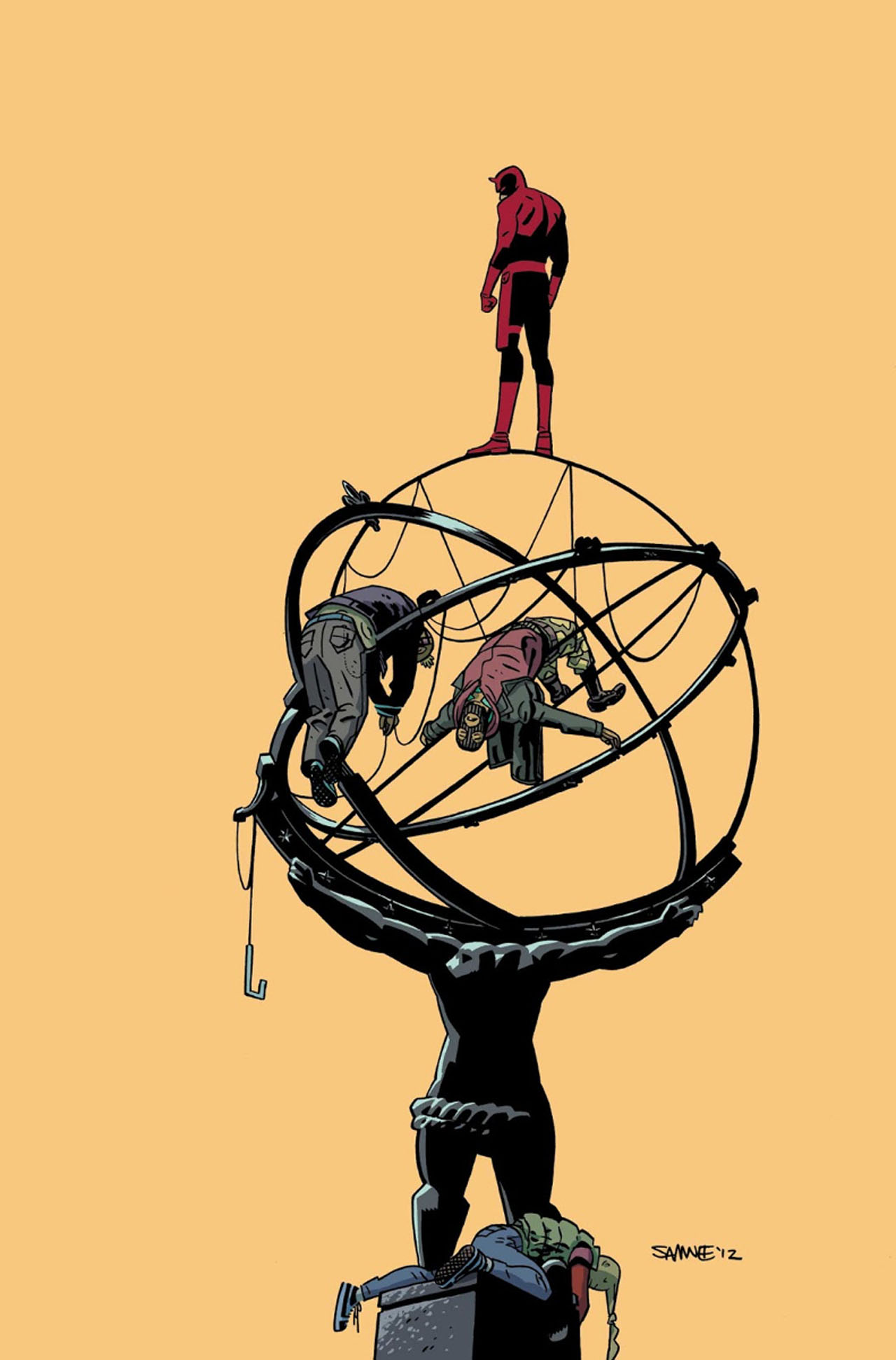
As Samnee elevates this book to a new level of visual consistency, Daredevil, Vol. 3 starts to move into its emotional and narrative endgame. After being evacuated and cured by the Avengers, Matt’s life is once again assaulted by an unseen enemy, one that had been setting traps for him since the title’s debut. On top of these personal pitfalls, Waid surprises the readers by giving Matt an enemy that he can’t simply punch or quip away, as longtime supporting character Foggy Nelson has been diagnosed with cancer. It’s a punch to the gut emotionally, and it further proves Waid’s willingness to keep the stories grounded with personal stakes alongside his thrilling set pieces.
Keeping with the idea of injecting personal stakes, Hank Pym becomes an unlikely poster boy for this series’ emotional direction as he strikes up a friendship with Daredevil. Dark mirror versions of Matt Murdock abound throughout this run of Daredevil, but Hank Pym might be Matt’s most surprising foil in this entire run. Pym’s mental health struggles mirror Matt’s own battles with depression, as does his pulling himself up from darkness by sheer force of will. Foggy Nelson will forever be Matt’s best friend, but giving Matt a professional peer who not only understands but has lived through his own version of Matt’s hellish career gives Hank’s sporadic appearances in Daredevil an extra sense of meaning.
Following Matt’s trip to Latveria, Waid and Samnee start to tighten their own narrative threads, making those starting story of the month issues matter in a way that not many readers could have expected. What was once just a chance battle with Klaw is now revealed to be another shot fired from behind the scenes at Matt, giving meaning to the early one and done stories at the beginning and the building of a larger narrative that would pay off in a big way later on. I never thought of Mark Waid as a writer working on this kind of plotting level before Daredevil, Vol. 3, but here he was retroactively turning issues like the encounter with Klaw and the body snatching plot of the Mole Man issues from fun entry points into a long, well-plotted drama. It was a welcome surprise and one that, as a reader, I would be looking for in future Daredevil yarns.
The big bad behind all of these macabre tests is revealed to be a paralyzed Bullseye who has enlisted the help of his female counterpart, Lady Bullseye, as well as Daredevil’s opposite, a deadly new foe named Ikari, and a new, deadlier version of the title’s first supervillain, the Spot, who has been shanghaied and used as a human battery for a disturbing human trafficking ring. In a perfect world, this epic showdown between Daredevil and the deadly alliance Bullseye has recruited would have been the true ending of Daredevil, Vol. 3, as it this arc raises itself to a fever pitch before delivering a true barnburner of a last issue, with an immobile Bullseye and Daredevil locked in a mortal struggle exacerbated by the deadly Lady Bullseye and Ikari.
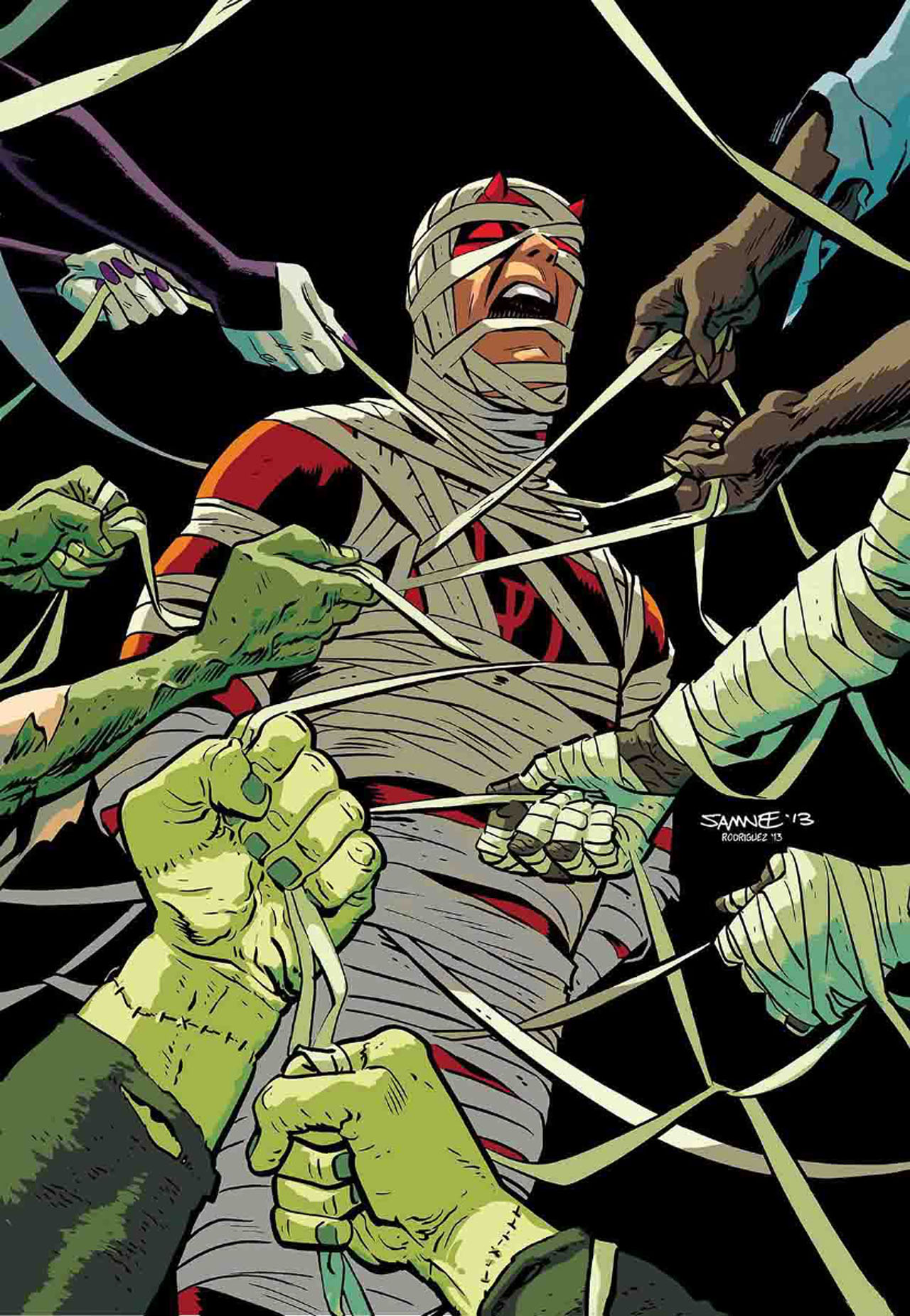
While Waid’s reimagining of the Spot offered up one of Samnee’s creepiest images, an EC Comics-esque room full of disembodied, screaming heads, it is Samnee’s creation of Ikari that steals the spotlight of this epic arc. Poised as a negative of Matt Murdock, Ikari, at first glance, seems like the ideal version of the devil himself, unencumbered by the personal ties that define Matt Murdock. Instead, the bloodthirsty Ikari is all about the fight, and more than a few times, he proves to be more than a match for our hero, not only in this arc, but in the grand finale of the whole run later on down the line. The first encounter with Ikari, in which Matt fights him to a standstill, stands as one of Daredevil’s most brutal encounters, with Ikari cutting a bloody response to Matt’s every move. Samnee even takes the idea of duality a step further by outfitting Ikari in a nightmarish version of Matt’s original yellow costume, but instead of billy clubs, Ikari is armed with two deadly kamas, highlighting not only his similar training, but his willingness to kill at a moment’s notice. While this deadly encounter with Bullseye and the culmination of longstanding story threads offers what could have been an explosive and complete ending, we still have a showdown with two of the most unlikeliest of Daredevil villains still to go.
As Volume Three winds down, Matt Murdock once again plays host to characters few people would ever expect. With one done-in-one story, Waid and Samnee seem to take on a dare to bring together the two most mismatched heroes in Marvel history, with Matt teaming up with the one-time herald of the almighty Galactus, the Silver Surfer himself. Following this charming, self-contained team-up, the Jester, a one-time Daredevil antagonist and full-time C-lister, makes a bloody comeback, hired by the Sons of the Serpent to incite a deadly riot after the verdict of a high-profile trial. Samnee’s usual intimate panels are replaced with sprawling scenes of riots in the streets, which in turn would overwhelm Matt’s radar senses and the readers in crimson and black outlines. Samnee’s redesign of the Jester is also a welcome addition, elevating the villain from a Batman '66-like Z-lister to a looming, garish presence.
Like I said earlier, however, this arc does feel strangely anticlimactic, especially given how brutal and tense the previous arc had been. While this Sons of the Serpent arc sets up the end of Waid and Samnee’s first volume, one its own it doesn’t quite feel as engaging. Perhaps in part it feels too cerebral, or feels too much like a retread of the maneuvering and countermaneuvering of Waid’s earlier “Megacrime” arc, but Matt’s probing of the Sons’ weaknesses or having a random judge pulling out a gun mid-trial doesn’t quite feel as harrowing as some of Waid and Samnee’s previous work. The fallout of this uncharacteristically spotty arc, however, would prove to be a game changer.

I mentioned before that it feels strange that Daredevil’s final battle against Bullseye wasn’t the conclusion of this run, but Waid has a more crucial battleground in mind for Matt to take his final stand: namely, his secret identity. Daredevil’s lazy attitude toward his secret identity had become a staple of the title since the Bendis days, even providing Mark Waid some of his funniest gags during his run, but in the final arc of Volume Three, Matt’s biggest secret has also become his greatest liability, as he’s blackmailed into defending one of the Sons of the Serpent in court. Waid cranks up the tension by putting an ailing Foggy Nelson in the crosshairs, but it’s his conclusion that feels so striking: Matt gives up. He gives them what they want.
Or perhaps more specifically, he gives up his secret identity.
We’ve seen this twist before, with Peter Parker and Tony Stark unmasking, but Waid and Samnee give this twist some added punch, with a larger-than-life image of Marvel’s heroes looking in awe as Matt says “I AM DAREDEVIL.” With this lawyer-cum-vigilante giving a thoughtful and emotional speech on the witness stand, Waid leaves an indelible mark on the Man Without Fear. There is no putting this genie back in the bottle, not in the way that Brian Bendis attempted to do near the end of his run, but this is a genuinely bold decision on the part of this creative team, and one with immediate repercussions. Matt quickly finds himself disbarred and unable to practice law within the state of New York, but that isn’t the important thing to take away from his revelation. Though it’s explicitly dealt with in the next volume, Mark Waid ends Volume Three with a Matt Murdock that is tired of secrets and hiding behind his mask. This is a Daredevil that is willing to embrace both sides of his life – whereas Waid was given a character who was an almost intrinsically broken man, by the end of his first volume, we are seeing a Daredevil who is more unburdened than ever before.
In the relaunch of Daredevil in 2014, Hell’s Kitchen might have spurned its guardian devil, but there was a brand-new coast full of adventures for ol’ Hornhead. While Waid and Samnee return for this new #1, they are quick to drop our hero into a whole new world – San Francisco. While Kristen McDuffie acts as both his legal partner and his off-brand Oracle to show him the ropes of a new city, Matt offers up his services as a special investigator working under the city’s deputy mayor, a particularly exciting supporting cast member named Charlotte Hastert. Much like the start of the previous volume, Mark Waid and Chris Samnee waste little time getting readers up to speed on Daredevil and his new status quo in San Francisco, but unlike Volume Three, Volume Four offers up a tighter, more focused run of issues, each functioning as a separately entertaining tale, while rewarding longtime readers with an intricately serialized plot.
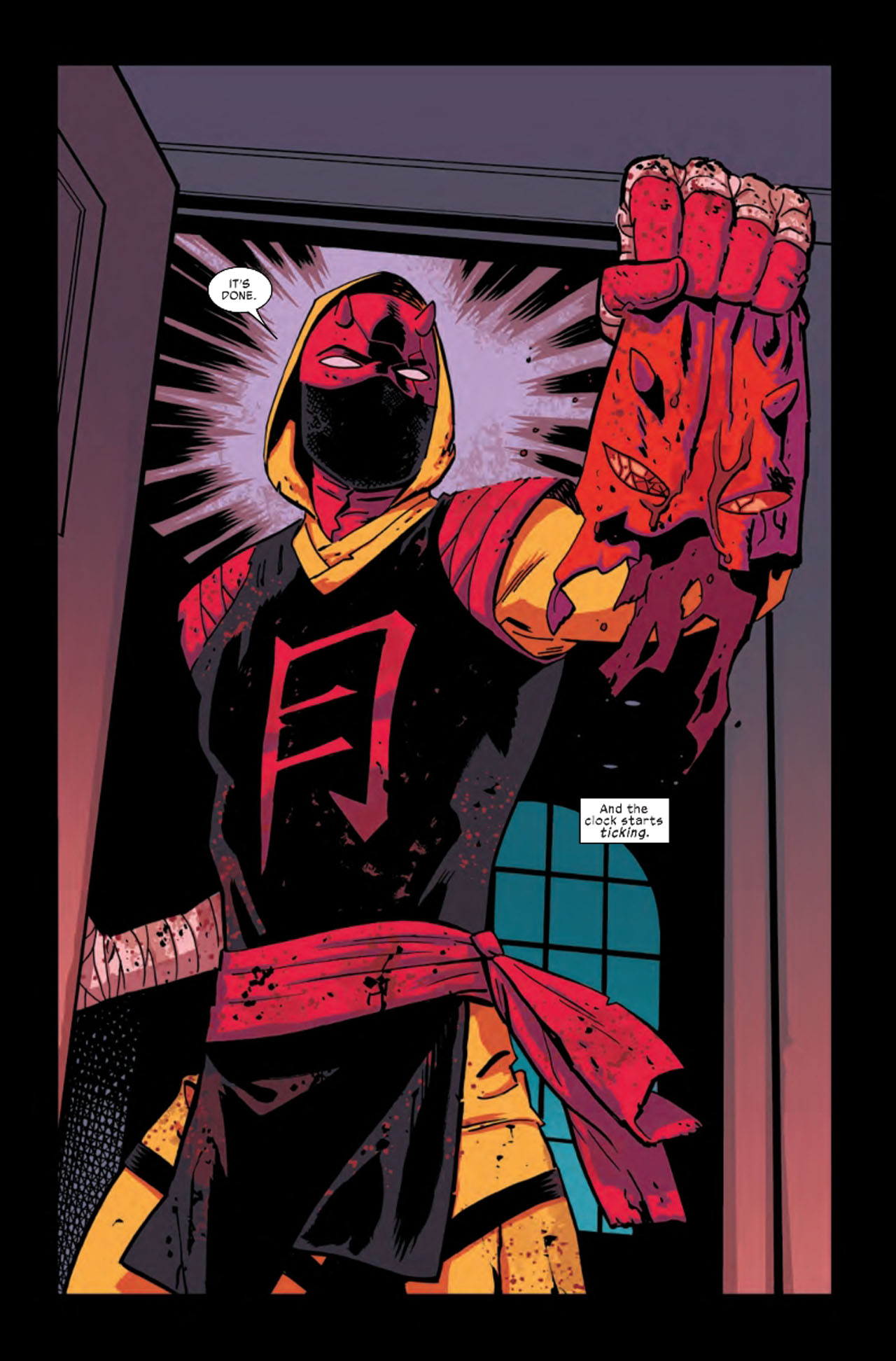
Waid and Samnee even introduce yet another dark doppelganger into Matt’s life as he tries to make a new life in San Fransisco. The Shroud, San Fran’s menacing resident “superhero,” acts as Matt’s first unsteady alliance as the Shroud attempts to find his lost wife by strong-arming his way through the criminal underworld. While Ikari was the version of Matt that had severed all personal ties and given in completely to violence, the Shroud stands as the version of Matt that succumbed to the depression that has plagued his life. The Shroud, while skilled, is impatient, callous, and displays almost no regard for human life as he and Matt spar. The Shroud would become a major player throughout this volume, and the comparison between the two is made explicit even as early as the series’ second issue. While Ikari takes the prize for being flashy as well as dangerous, the Shroud proves himself to be a worthy addition to the Daredevil cast until the very end.
While Volume Four drops Daredevil into a new and unfamiliar setting, this volume is also characterized by Waid bringing back familiar faces from Daredevil’s crimefighting career and gives them a brand-new spin. The first arc concerns Daredevil butting heads once again with the Owl, who is now attempting to solidify a base of operations in San Fransisco while Matt and Kristen attempt to get a new legal practice off the ground and try to keep Foggy under the radar after a very public faking of his death, which provide this new volume its first major twist in issue five after Matt turns a chance encounter with the Frog into an opportunity to take Foggy out of the crosshairs and the public eye. The Owl is just the first of many old foes that Waid brings out of mothballs to harass Matt in his new home. Each villain that Waid and Samnee revisit feels fresh and new, either by giving them a new and terrifying power set like he did with the Owl, or even shifting down a generation like the Purple Man, divvying up his powers across seven creepy and very powerful children. Volume Four of Daredevil is all about renewal, and each time Waid delivers that in earnest.
That theme of renewal is nowhere more obvious than in the two-issue "Original Sin"crossover, where Waid takes what could have been a generic superhero crossover and turned it into a severely emotional look at post-partum depression, displaying once again his willingness to make Daredevil a grounded, human take on superheroics. With the Marvel Universe reeling after the Orb uncovered our heroes’ greatest secrets, Matt was stunned by a vision of his sainted father, Battlin’ Jack Murdock, abusing his mother, Maggie. As Matt seeks to understand this vision, he is brought back to New York where he finds out that his mother has been arrested on charges of civil disobedience and about to be extradited to Wakanda.
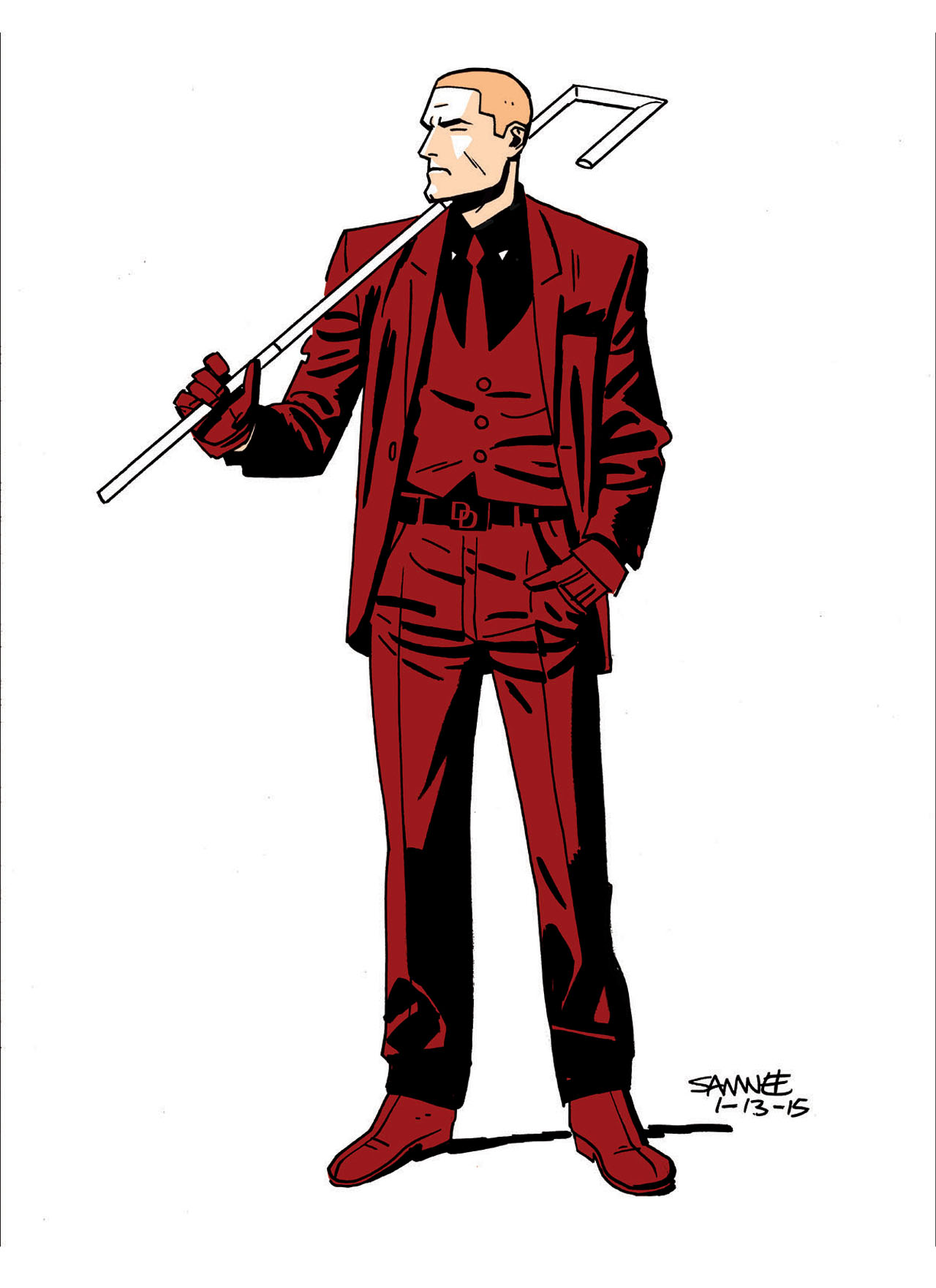
Javier Rodriguez renders these issues in some truly high-flying panels and action sequences, with Matt’s infiltration of the Wakandan embassy and his first encounter with Queen Shuri’s scout forces as two particular stand-outs, Waid’s script once again goes out of its way to aim for the heart. Matt’s somewhat strained relationship with his mother has more than a few times been employed in the pages of Daredevil to try to humanize Matt, but here, Maggie feels like more of the lead character than Matt as she reveals her harrowing struggle with him as a baby and her very real fight to be a good mother in the face of the great gaping maw of depression. While Volume Four is a constant barrage of action and costumed heroics, these two issues show that Daredevil still wasn’t afraid to be about very real issues.
After "Original Sin," Daredevil suffers a pretty significate misstep in the form of two Stunt-Masters. The hook of this arc is there – a pharmaceutical company has sponsored a new, more death-defying Stunt-Master and the original attempts to enlist Matt and Kristen to build a lawsuit against him. Unfortunately, that thread is quickly dropped for punching and grandstanding as Matt and the new Stunt-Master try to top one another for the moniker “The Man Without Fear.” It is unrealistic to think that every arc in this mammoth run will be a home run, and the Stunt-Master arc is prime example of that.
After the lackluster encounter with the Stunt-Masters, Daredevil starts to pick up speed toward its coup de gras. Emboldened by an offer by Kristen’s publisher father (and millions of dollars in advance) to write an autobiography, Matt finally embraces his dual identity – and the celebrity that comes with it. Much like during his outing to the Sons of the Serpent, Matt starts to wear his secret identity on his sleeve instead of operating in relative secret. And speaking of sleeves, Samnee’s talent for costuming is once again displayed here as Matt turns his crimefighting persona into a slick three-piece suit complete with a DD belt buckle that he can wear not only to bust heads but to try cases. Serving as his main costume until the finale, Samnee gives Matt a functional and impressive new wardrobe that is tailor-made for the streets, rooftops, and cosplayers alike, not to mention a solid visual metaphor for the brighter and more flamboyant tone of this run.
Of course, Matt’s good times never last as the Shroud, who has taken the Owl hostage and forced him to act as an unwilling information broker, releases every detail pertaining to Matt’s life, law practice, and Foggy’s fake demise. While racing to find a way to stem the chaos, Daredevil forms a tenuous alliance with the Owl’s daughter, Jubula Pride, who proves to be just as vicious and capricious as her father. Waid plays this partnership almost like the shaky alliance between Matt and the Punisher from all the way back in “The Omega Effect,” as it becomes apparent that Jubula has no problem taking the lives of those that stand in her way. This alliance, while fun and humanizing for Leland Owlsey, unfortunately doesn’t lead to anything really lasting, as Jubula is quickly sidelined. But this isn’t even the most unlikely alliance that Matt finds himself in going into the finale. That honor is left to one that Matt’s entire existence has been tied to from as far back to the early days of his crime-fighting career: Wilson Fisk, the Kingpin of Crime.
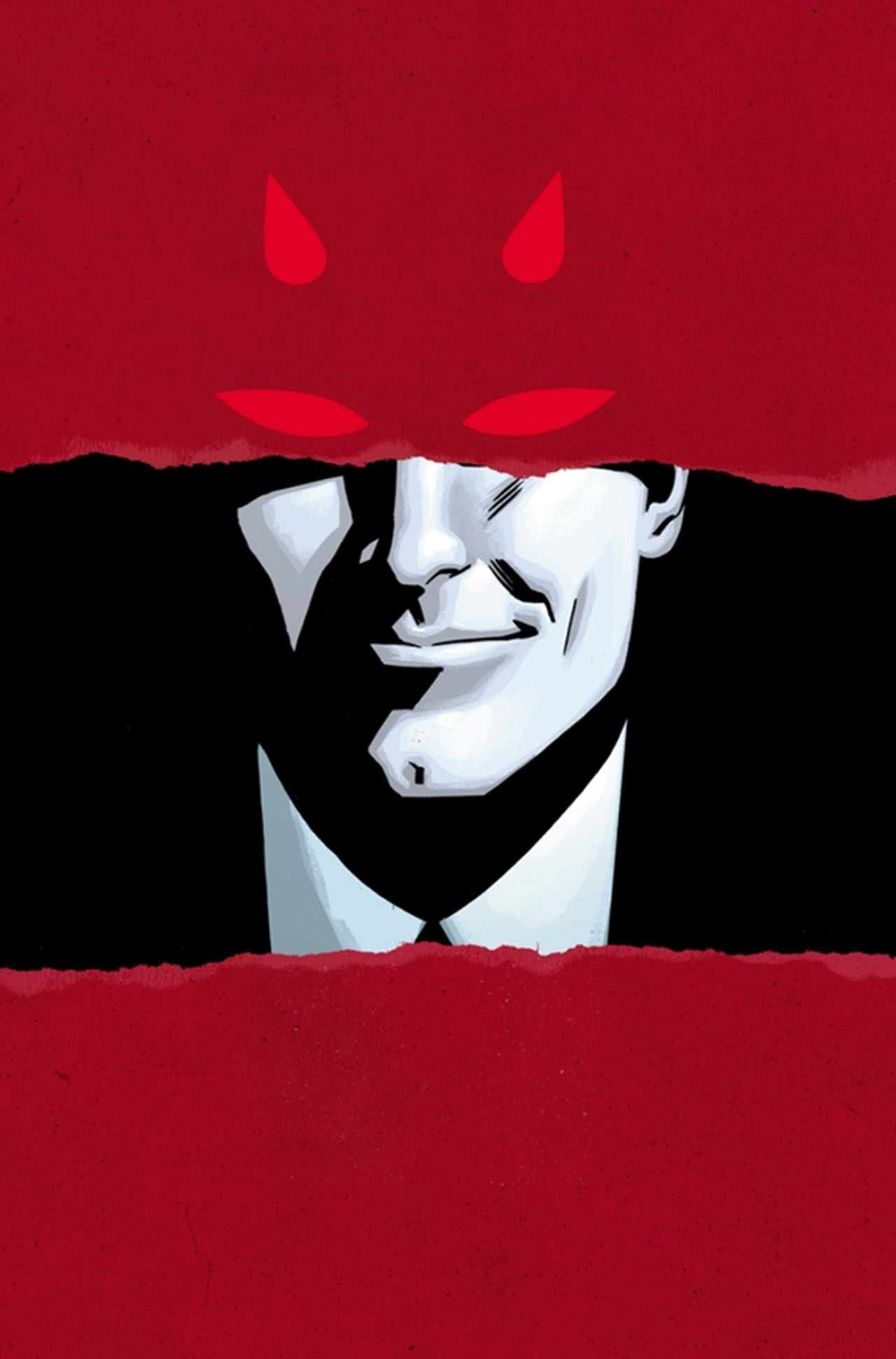
That’s right, going into the endgame of Daredevil, Vol. 4 Wilson Fisk makes his triumphantly evil return as Matt hopes to enlist his help to restore his secret identity and bring some sanity back to those closest to him. Mark Waid and Chris Samnee waited an awful long time to play this card, and smartly so. Until this run, Fisk had been a Daredevil mainstay, and having him gone for so long only to slink his way back into Matt’s life when he is at his lowest is one hell of an entrance.
Combined with the return of the deadly Ikari, who kidnapped Kirsten and Foggy on behalf of the Kingpin, Waid backs Matt into a corner, and readers can feel the desperation as Matt fears the bad old days are right around the corner for him. The final two issues of the series are pulse pounding affairs of bluffs and double-bluffs as Matt and his friends fight back against the rising tide of Fisk’s influence. In the end, Matt, using the tattered costume of Ikari, gets the best of Fisk and uses his new Owl-powered sphere of influence against him, sending him back into the shadows to strike another day.
While a lot of the build up to this finale was thrilling and genuinely fun to read, the final issue falls flat in term of resolution. Each baddie introduced is quickly swept away off-panel, tucked away for other writers to hopefully use later on, but never given a true resolution in the book that introduced them. Foggy’s cancer is also given a quick bow of an ending as it conveniently goes into remission by the time the final pages roll around with no real lasting consequence going forward. The thread of Matt’s multi-million dollar autobiography is the only narrative throughline to get any real attention and even then, nothing of consequence comes from it – Matt simply wrote a book that serves as the finale’s narration, but that’s it. Waid and Samnee quickly hit the reset button for the incoming creative team and for a book that made a splash making bold moves, you can’t help but feel let down after reading, but a rushed finale doesn’t negate the stories that came before it, it just makes the ending of it that much more bittersweet.
After four years and multiple Eisner wins, you can’t help but feel sad knowing this this run has come to an end. From the very start, Waid and the art team give us superhero tales that feel relatable, accompanied with a characterization for their lead that feels different than what had come before. Unlike Frank Miller’s gritty masterpieces or Brian Michael Bendis’ loquacious crime dramas, Waid and Samnee’s Daredevil’s street-level storytelling yields easy entry points for new readers as well as longer-form story arcs the keeps the diehard readers coming back. Craig Ferguson once described the appeal of Doctor Who as the triumph of intellect and romance over brute force and cynicism. While Matt wasn’t and will never be afraid of brute force, the sentiment rings true for these volumes of Daredevil as well. These stories are all about a man who is tired of the abundant darkness that the world has to offer, and chooses to make the hardest decision of all: to greet it all with a smile. And that’s a choice that’s made an entire fandom smile along with him.
Justin Partridge is a freelance journalist who can be found at GamesRadar+ and Newsarama writing reviews about the best comic books out there. He's also known to put his encyclopedic knowledge of the industry to work by exploring some of the biggest events in comic book history.


